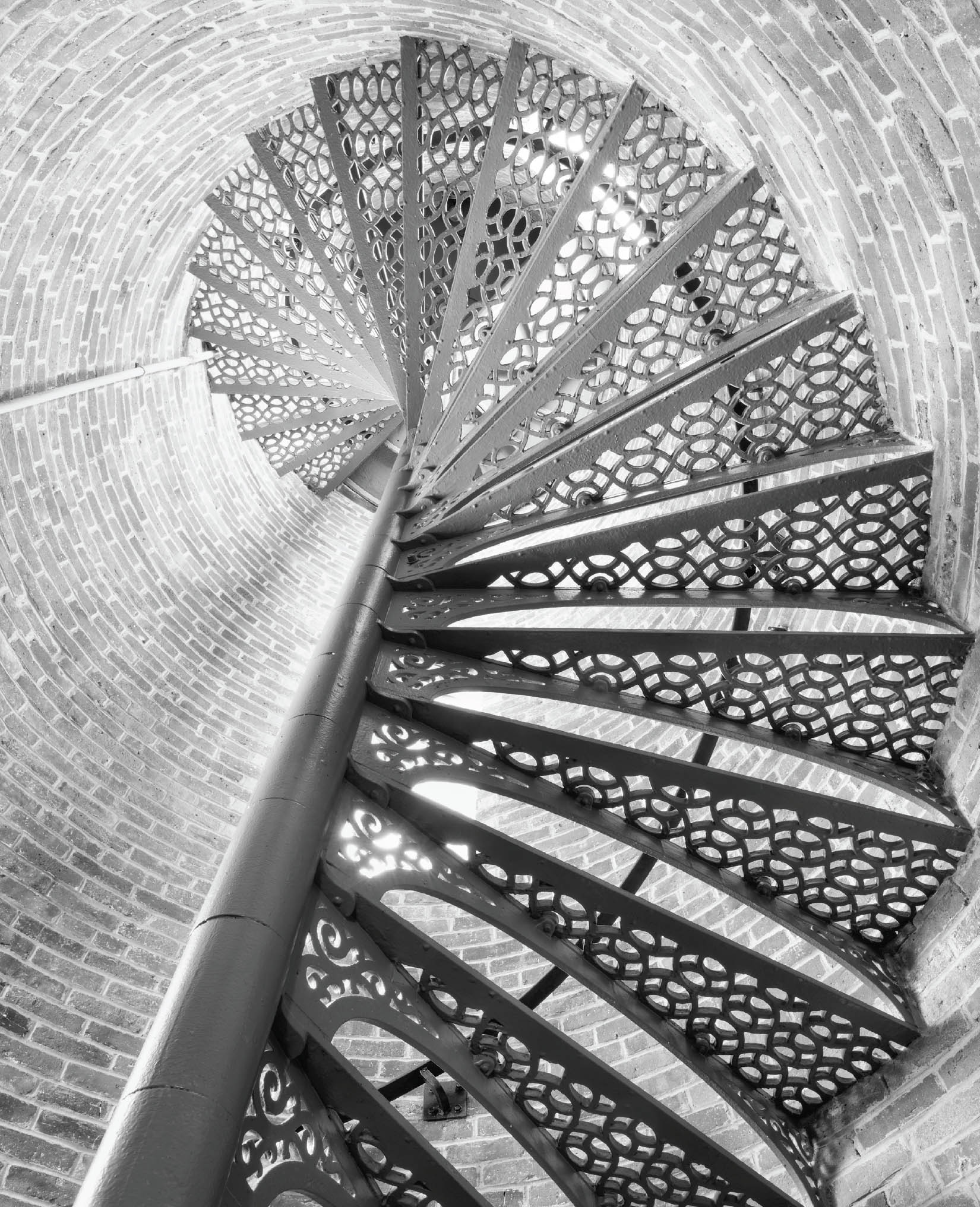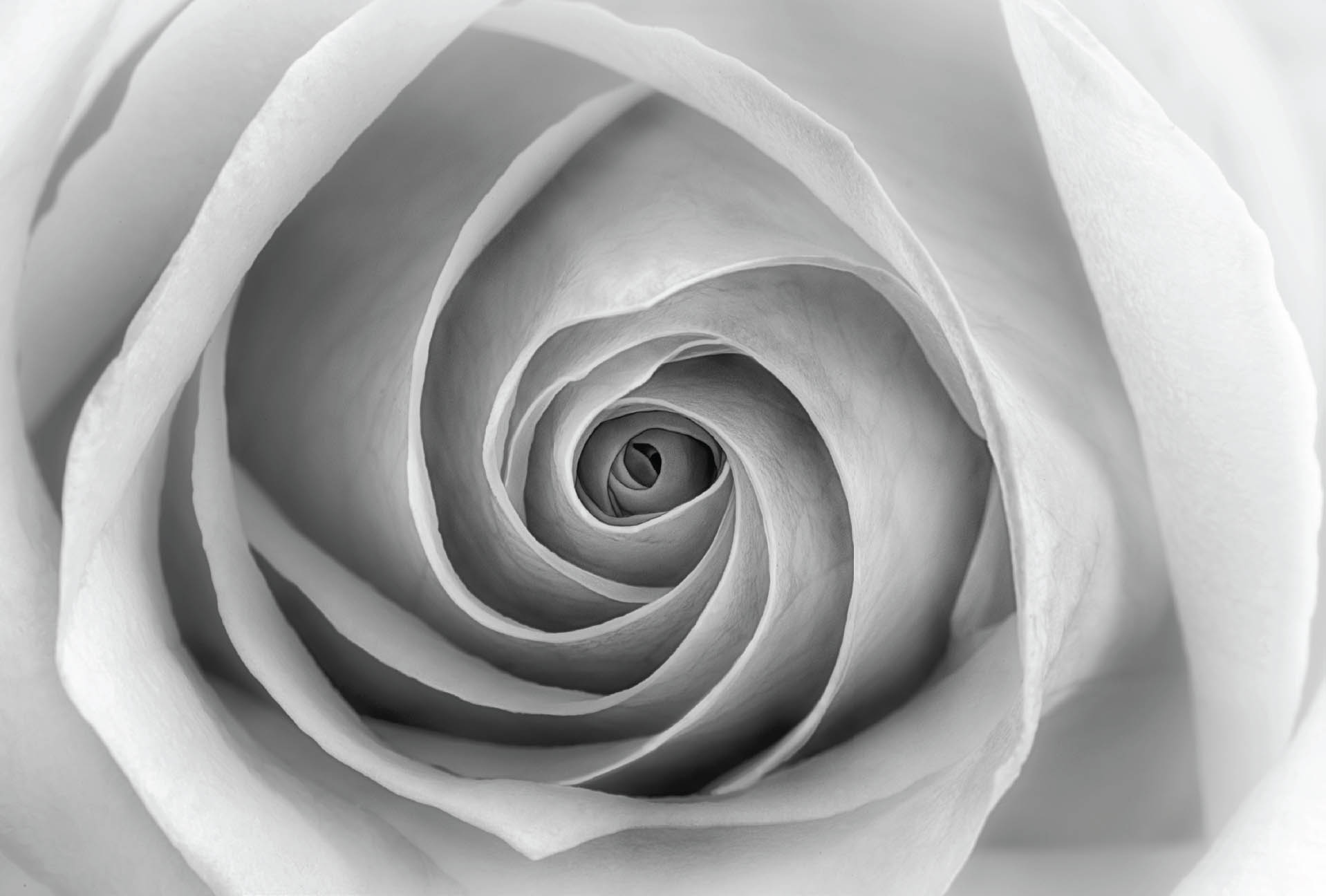Shape and Form
How do you know when the shapes and forms in your black and white composition will be effective?
The best way to pre-visualize the impact of shapes on your photos is to practice separating form and function. In other words, try to forget about the subject matter of your photo as you abstract a composition from the shapes in front of you.
In an ideal world, form should follow function, and the two should be inextricably partnered in a dance that will last as long as we have material things. This feeling in a composition is surely something to aspire to!
But as a practical matter, if you keep what something is too much in mind, then that very “is-ness”—the function of the object—will intrude into your vision and overlay issues of pure form.
In fact, some of the most startling black and white compositions occur when the form portrayed in the image appears very different from the function of the object in the photo—or at least unusual, in the sense that the form isn’t usually associated with the object.
When I’m pre-visualizing an image, one part of my work is to ignore the meaning and function of the actual object or scene in front of me. I look for formal components such as framing, lines, and shapes.
Occasionally, I have a hard time looking at things in such an abstract way. When this happens, I find that I can amuse myself by inventing alternative scenarios. I picture the image in front of me as belonging to an alien, possibly absurd universe. I try to invent humorous stories about the objects.
If I can succeed in inventing plausible alternatives, then it is very likely that I can sit back and “cancel out” both this everyday world and my invented alternative. With no points of reference to connect the objects or scene in my photo to “thingness”—the physical reality and function of the actual world—I am able to create visual constructs that use shapes as compositional building blocks and create forms that are fluid and graceful.
Inside the Pemaquid Lighthouse—The lighthouse in Pemaquid Point, Maine, is still in use today, and is operated by the United States Coast Guard. I was lucky enough to visit the lighthouse during a tour led by a docent. After we inspected the light at the top of the tower, I set my tripod up under the spiral stairs and used a fairly wide-angle lens (the Zeiss 21mm f/2.8 Distagon) to capture the entire sweep of the spiral staircase. When I processed the image and converted it to black and white, my idea was to make the top of the stairs lighter than the bottom, so that the visual impression is that the comparatively dark stairs are leading up into the light.
Nikon D810, 21mm, 30 seconds at f/22 and ISO 64, tripod mounted; converted to monochrome using Photoshop Adjustment layers and Nik Silver Efex Pro.
White Rose in Black and White—Looking at this white rose, which was pretty much stark white with a hint of satin-like blush, I knew it was going to look great in black and white.
I photographed the white rose using ambient sunlight with a telephoto macro lens (200mm) on a tripod, using an extension tube to get a little closer. To capture the full range of grays in this image—from pretty much white on the periphery of the rose to quite dark in the center of the flower—I used a series of six exposures that were bracketed 1 EV (Exposure Value) apart, with the shutter speed as the element of the exposure triangle that was bracketed. I then combined the different exposures in Photoshop using layers, layer masks, blending modes, and painting on layers.
Nikon D810, 200mm macro, 18mm extension tube, six exposures at f/36 and ISO 64, shutter speeds ranging from 8 seconds to 1/4 of a second, tripod mounted; converted to black and white using Photoshop Adjustment layers and Nik Silver Efex Pro.


